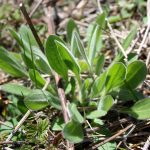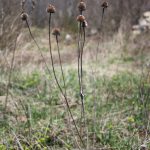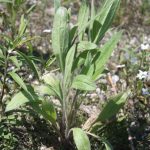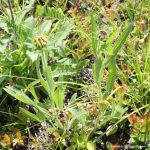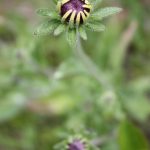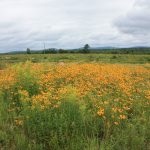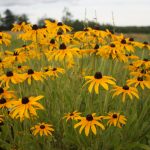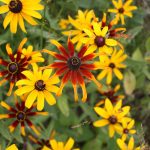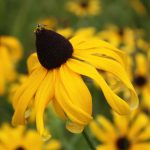Black-eyed susan
Prepared by Jennifer L. D’Appollonio, Assistant Scientist, University of Maine, Orono, ME 04469. Updated February 2018.
Scientific name: Rudbeckia hirta L.
Common name(s): black-eyed susan, brown-eyed susan, black-eyed coneflower, brown betty, gloriosa daisy, yellow ox-eye daisy
Links: USDA PLANTS Profile , NPIN Profile, Go Botany
Images: (to see enlargements [PC]: click on image, then right click and choose “view image”)
- early May
- last year’s flowers, early May
- late May
- in prune blueberry field, mid-June
- early flower, mid-June
- in flower, mid-July
- color variations
Description:
– annual/biennial/short-lived perennial
– generally flowers June through August in ME
Stems 1′ to 3′ tall, stems bristly, erect, with few branches. Leaves at base lance-shaped, on upper stem narrow. Flower heads at end of long stalks, 2″-4″ wide, orange-yellow. Center of flower head a mass of purplish-brown minute flowers. Seed about 1/8″ long.
-Also known as rudbeckias and coneflowers, there are about 30 species of these popular native wildflowers
– two varieties in New England, the rare native var. hirta and common introduced var. pulcherrima; see Go Botany webpage
Habitat:
-most species enjoy moist, well drained, fertile soils
-partial shade or full sun
-pioneer plants
- first plants to grow in an area damaged by fire
-often Diseased by powdery mildew and rust
Agriculture:
-Eaten by slugs, snails, aphids, deer, and other small mammals.
-host to the Silvery Checkerspot butterfly caterpillar
Source(s):
Haines, A., Farnsworth, E., Morrison, G., & New England Wild Flower Society. (2011). New England Wildflower Society’s Flora Novae Angliae: A manual for the identification of native and naturalized higher vascular plants of New England. Framingham, MA: New England Wild Flower Society. p. 425.
Heinrich, B. 1976. Flowering phenologies: Bog, woodland, and disturbed habitats. Ecology. 57(5):890-899.
Krochmal, C. (2009). Black-eyed susans. Bee Culture, 137(7), 47.
Department of Agriculture and the environmnetal sciences, The Ohio State University. Plantplath.osu.edu, The Plant Pathology Graduate Student Association, plantpath.osu.edu/sites/plantpath/files/imce/images/NativePlants/BlackEyedSusan.pdf.

